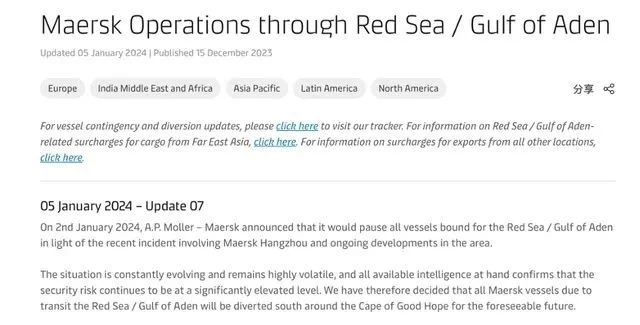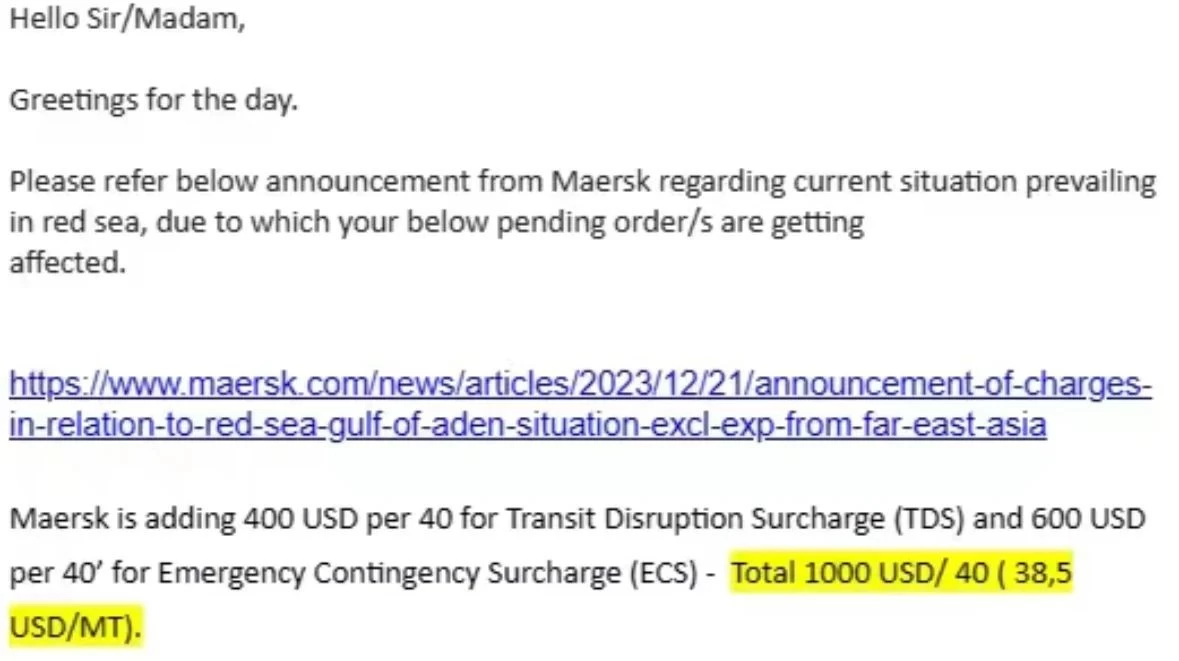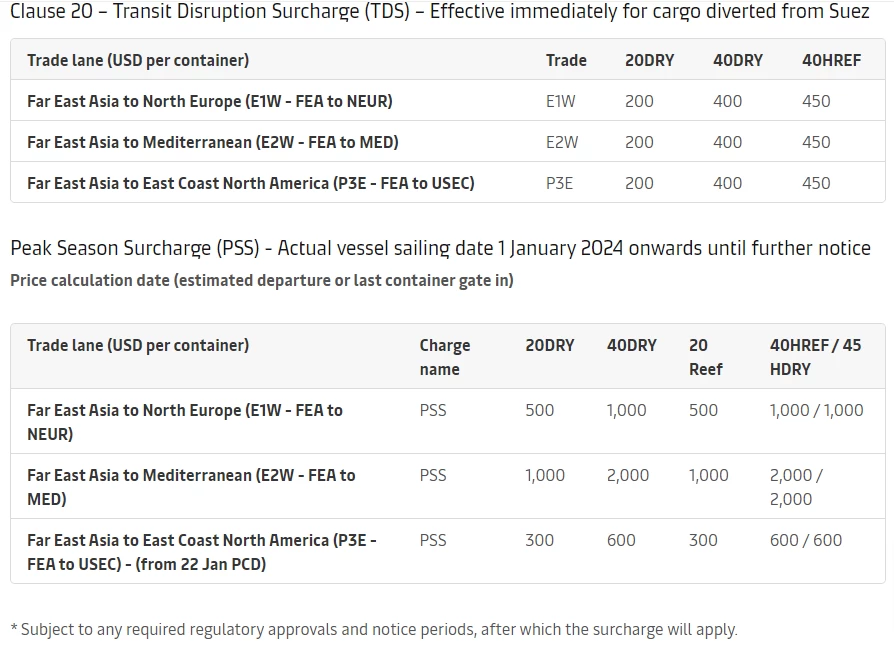Freight rates in Asia and Europe are going crazy!

On December 30, 2023, the Maersk Hangzhou was attacked while passing through the Bab el-Mandab Strait from Singapore to the Egyptian port of Suez, and Maersk decided to suspend voyages through the area for the next 48 hours.
On January 5, Maersk announced that it had decided that for the foreseeable future, all Maersk vessels passing through the Red Sea/Gulf of Aden would sail south around the Cape of Good Hope, bringing the total number of Maersk vessels to more than 170.
In a statement on January 5, Maersk also said that the previously announced transit interruption surcharge (TDS), peak season surcharge (PSS) and Emergency contingency surcharge (ECS) for all cargoes on board disrupted vessels in the Red Sea/Gulf of Aden area remain in effect.

For Chinese exporters, detours mean longer shipping schedules and more expensive sea freight.
The shortest route between Europe and Asia is through the Mediterranean Sea, through the Suez Canal, and then into the Red Sea.
Ships returning to the Suez Canal and taking a detour around the Cape of Good Hope would incur new transit fees, additional fuel costs and exacerbate severe delays. For every round trip between Asia and northern Europe, ships rerouting around the southern tip of Africa are expected to cost an extra $1m in fuel.
Prices are up!
A freight agent said on January 5 that "the shipping space in early January has been exhausted", and the quotation in late January is currently updated only by individual shipping companies. According to the updated quotation, the freight rate rose again in late January compared with the previous ten days, of which the small container rose by about $600, the high box rose by about $1,000, and the overall increase range was 500 to $1,000
Specifically, the freight forwarder pointed out that in late January, the freight rate of the European route was 3,150 US dollars /TEU(a container with a length of 20 feet) and 6,050 US dollars /FEU (a container with a length of 40 feet), which increased by about times compared with the price at the end of December last year. The freight rates for the Mediterranean route are $4,400 /TEU and $6,250 /FEU, up about 1.2 to 1.3 times compared to the end of December last year
Some forwarders also pointed out that "most shipowners have not updated the quotation, but the news is that the headquarters will have a higher desire to raise prices."
According to Kuehne + Nagel's market dynamics from early January to mid-January released on January 3, in the context of continued tension in the Red Sea, freight rates are expected to remain at a high level until mid-February and further increases are not excluded. Among them, China to Europe, the Mediterranean route, the first half of January, shipping companies generally push up the European base port freight to 4500-5000 US dollars/large container, push up the western Mediterranean line freight to 5000-5500 US dollars/large container
A closet at sea suddenly costs thousands more
Now many foreign trade people who are shipping to Europe have received an email from the shipping company, saying that they need to charge a detour fee:

According to Maersk's official website, the latest price increase is as follows:

Maersk official website notice:
https://www.maersk.com/news/articles/2023/12/21/announcement-of-charges-in-relation-to-red-sea-gulf-of-aden-situation-from-far-east-asia
It is reported that not only Maersk, some Asia-Europe route shipping companies have issued additional bills.
At present, there have been disagreements between foreign traders and European customers on who caused the problem of this money, and some European customers have asked suppliers to immediately suspend shipments until the Red Sea situation is stable!